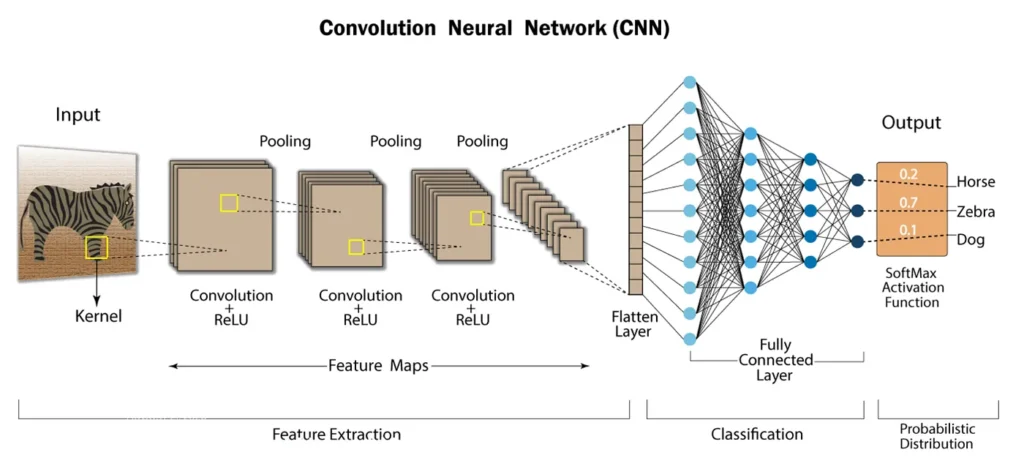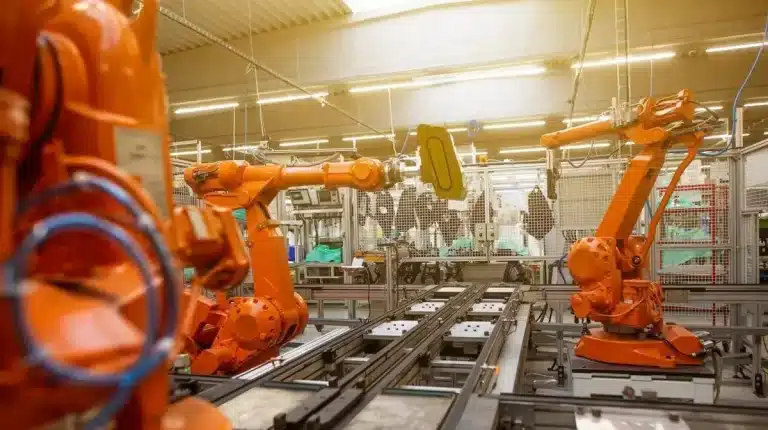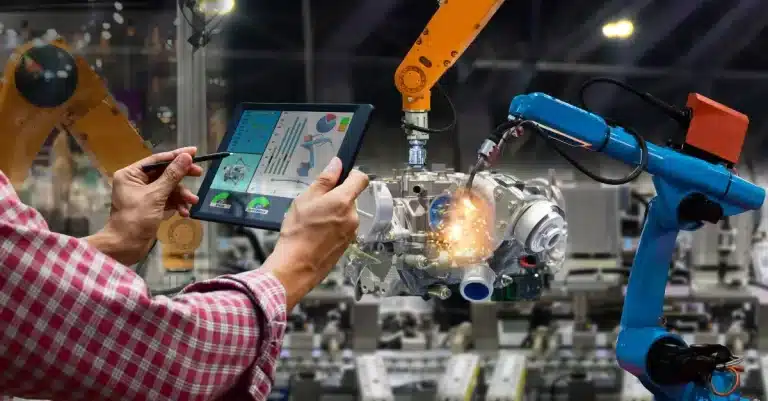Object detection is key in computer vision. It involves recognizing objects in images and finding their locations. This article covers object detection with CNNs (Convolutional Neural Networks). We will discuss important CNN models, such as Faster R-CNN, YOLO, and SSD. We will also explain how CNNs work and their future in AI.

Key Takeaways
- Convolutional Neural Networks (CNNs) are great for object detection tasks. The three critical tasks for object detection with CNNs include classification, localization, and segmentation.
- CNNs learn to recognize objects through a multi-step process. This process involves identifying object classes, locations, and boundaries.
- CNN-based models like Faster R-CNN, YOLO, and SSD are both accurate and fast. They use new techniques to improve detection.
- Backpropagation helps refine CNNs. It adjusts their filters for better accuracy, even with changes in size, angle, or lighting.
- Future CNNs will be faster and more adaptable. They will handle complex conditions and environments better.
Understanding Object Detection with CNNs
Object detection with CNNs involves three main tasks: classification, localization, and segmentation. Each task helps the network identify objects, find their locations, and define their shapes.
Step 1: Classification
In classification, the CNN scans an image to identify objects. For example, it might recognize “car,” “dog,” or “tree” based on its training. The CNN extracts features from the image to assign labels to the detected objects.
Step 2: Detection/Localization
After classification, the CNN locates the objects by predicting bounding boxes around them. These boxes show the exact position of each object. The CNN determines what objects are present and their coordinates.
Step 3: Segmentation
Segmentation improves detection by identifying the pixels that belong to each object. Unlike detection, which uses boxes, segmentation outlines each object’s shape more precisely. This is useful in medical imaging and tasks needing detailed boundaries.

Backpropagation
Backpropagation is the key method used for training CNNs. During training, backpropagation helps adjust the calculations based on the errors in its predictions. This is done by calculating the loss, which takes into account the difference between the model’s output and the actual labeled data (annotations), allowing the backpropagation method to update the model’s weights, in order to minimize future errors.
The backpropagation technique applies these adjustments to the model, helping it improve its performance over time. As the network processes more images, it refines its filters, leading to more accurate detection in diverse environments.
Training and Evaluation
CNNs are trained on large datasets like COCO (Common Objects in Context). COCO has over 330,000 images labeled with 80 object categories. Training on such datasets helps CNNs learn from numerous examples.
In training and evaluation CNN models use:
- Classification loss: Measures how well the CNN predicts object classes. Lower loss means better classification.
- Localization loss: Shows the error between predicted and actual bounding box coordinates. Lower loss means better detection of object positions.
- Segmentation loss: Indicates how accurately the model identifies object pixels. This is for models that perform segmentation.
- Mean Average Precision (mAP): A key metric for evaluating object detection models. mAP measures precision for each class and averages it. It reflects the model’s overall accuracy.
CNN-Based Object Detection Models
Several CNN-based models have improved object detection:
- R-CNN: Uses region proposals to detect objects but is slow because it processes each region separately.
- Fast R-CNN: Runs the CNN on the whole image once, speeding up detection. Fast R-CNN is 45 times quicker than R-CNN during testing and 9 times faster during training.
- Faster R-CNN: Introduces a region proposal network (RPN). This RPN speeds up the detection process. It generates object regions more efficiently.
- YOLO (You Only Look Once): Treats object detection as a single regression problem. It predicts bounding boxes and class probabilities in one pass. YOLO is very fast and good for real-time detection.
- SSD (Single Shot Detector): Improves accuracy by detecting objects at different scales. It uses feature maps from various CNN layers to predict bounding boxes.



EasyODM’s use of ONNX for Object Detection
EasyODM’s machine vision software uses the ONNX (Open Neural Network Exchange) format. ONNX is a format designed to convert deep learning models from other frameworks, such as PyTorch or TensorFlow, into a common platform. The support for this format enables training and developing models with the preferred framework, while the final model can be easily converted to ONNX.
When the model is optimized and deployed, it can achieve efficient, real-time performance for tasks like object detection. This is beneficial for many industries, including manufacturing. This leads to more reliable object detection in various production tasks.
The benefits of convolutional neural networks
- Automatic feature extraction: CNNs can automatically identify important features from images, reducing the need for manual effort.
- High performance: CNNs excel in tasks like image classification, object detection, and segmentation.
- Transfer learning: CNNs use pre-trained models, requiring less data and computing power for new tasks.
The limitations
- Overfitting risk: If trained on small datasets, CNNs can overfit, memorizing instead of generalizing. This could lead to problems when interpreting new data.
- Black box model: CNNs lack transparency, making their predictions hard to interpret or understand why it was made.
- High computational cost: Training deep CNNs demands large amounts of data and computing power.
Conclusion
Object detection with CNNs have changed object detection. CNNs offer faster, more accurate, and scalable solutions. Models like R-CNN, YOLO, and SSD show how CNNs push the limits of computer vision. The future holds even more refined models for challenging environments. Applications could include robotics and autonomous driving. By integrating CNN technology, industries can improve efficiency and automation in their workflows.


